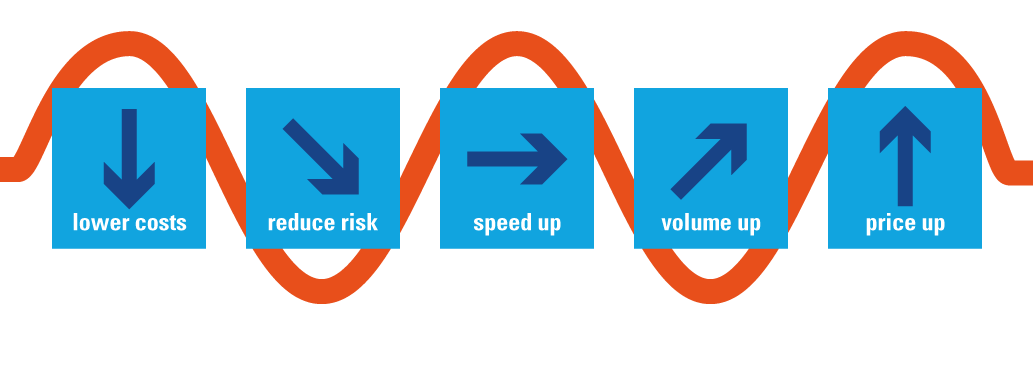Write an excellent business case
As a manager you regularly struggle with investment issues. You have to be at your best to get your plan, which requires the necessary resources (time and money), realised. The content and complexity of the matter make management reluctant to make investment decisions. It helps enormously if you strip the plan of the technical details and focus mainly on what it will deliver to the organization: in a clear business case. But how do you do that?
In the trade journal Kwaliteit in Bedrijf an interesting article was published earlier that accurately describes the fundamentals of an excellent business case. From mapping the TCO (Total Cost of Ownership) and ROI (Return on Investment) to the New Profit concept (sustainable profit for all stakeholders) and the 5 strategic drivers for making an investment. You will find the complete article here (in Dutch) »
The business case in a nutshell
For the business case you prepare the deliverables according to a recipe. You package these in a visual summary on one A4 sheet and with an appendix for the substantiation. You present that story to the man in person.
Step by step it looks like this:
A. The situation
Write a very brief introductory story and above all give a visual situation sketch. Where is it taking place? What is the challenge? How much does it hurt (time / energy / mistakes)? Who are involved and how are they affected by the current situation? Be careful not to mention money, amounts or numbers yet.
B. The point of decision
Formulate as a clear question the point of decision that we are going to say YES or NO to. "Given the considerations below, do we want to address this situation if it solves the following problems and provides the following opportunities?"
C. The Considerations
In a structured list, write down the keywords and images (where possible, words and images that express emotion):
- If we don't decide (i.e., procrastinate) or decide NOT to do it and stay still?
- the disadvantages - of not doing it
- the benefits - of not doing it
- If we decide to do it WELL, what happens?
- the disadvantages - of doing it
- the benefits - of doing it
D. The alternatives
Be honest, think about it and ask colleagues too; show it if there might be alternatives. You don't necessarily have to work them all out, but show that you don't have a 'one track mind', but a broad view.
E. The financial justification.
Provide a concise but specific summary of the following points:
- The situation now and specify the cost of poor performance
- The financial consequences if we do nothing
- The financial consequences if we do, broken down into
- MIN = the investment or depreciation of the investment + extra costs
- PLUS = decrease cost waste, decrease risk x impact, increase cash flow, increase sales growth, increase selling price
- Success rate and variation, and rather a rough indication of success rate than no idea at all.
F. The next step - decide
Request a deadline to decide, within which taking action makes sense. Explain why a decision is important and delaying a decision is harmful.
Want to know more?
Do you have questions about preparing and presenting an excellent business case? Feel free to contact us. We will be happy to assist you.
De Nederlandse versie van deze blog tref je hier »


